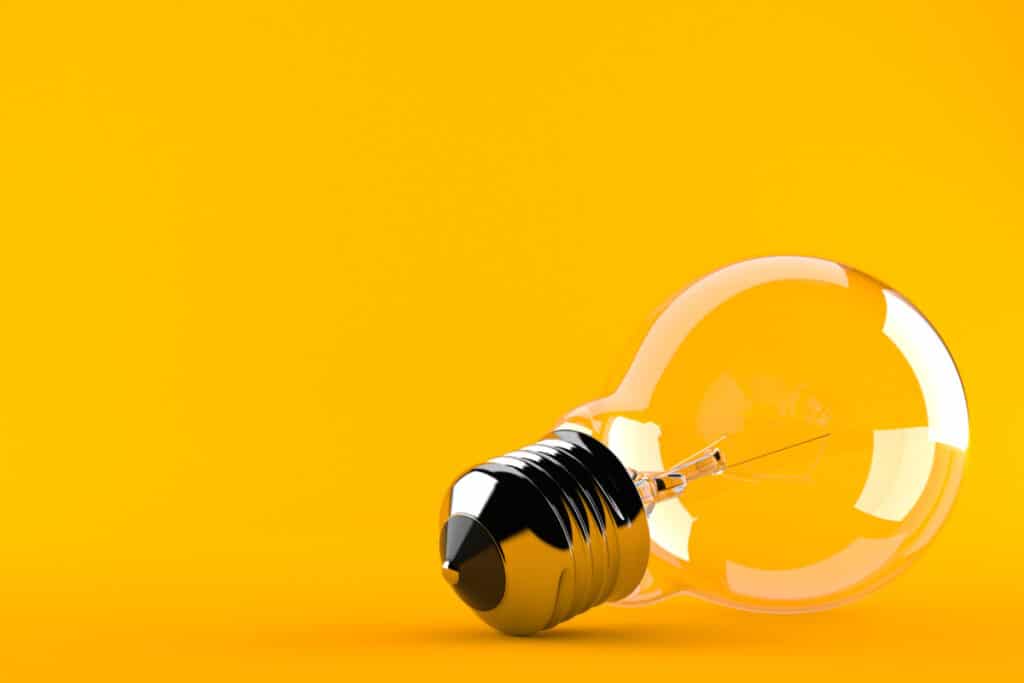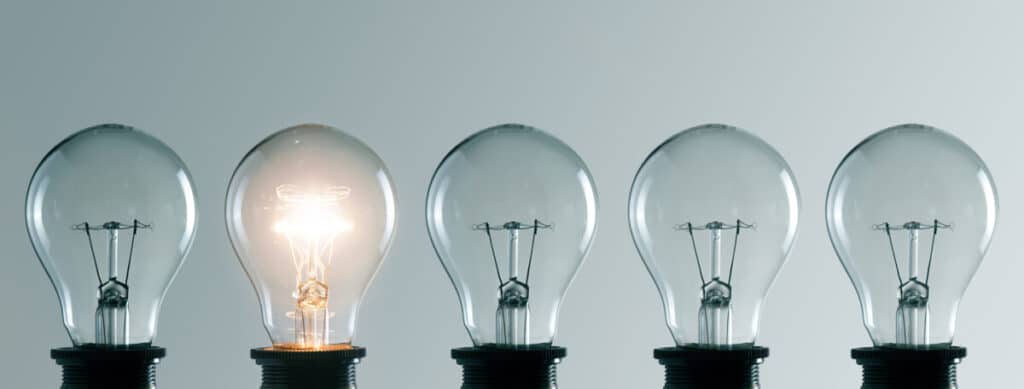The light bulbs in your house always seem to burn out when you don’t have any replacement bulbs standing by. It’s as if they know!
To avoid being in the dark, you may consider stockpiling a few bulbs, but will they expire before you’re ready to use them?
While light bulbs don’t expire, they have estimated hours of use. So long as the lighting filament hasn’t broken, the light bulb will continue working. Light bulbs can be stored for several years and still work like they are brand new. Once the light bulb nears that estimated usage, it may burn out.
While light bulbs last in storage for many years, certain storage conditions will help protect the bulbs.
Below you will learn more about when light bulbs expire and how to store them properly. In other words, this post is guaranteed to enlighten you.

Light Bulbs: When do They Expire?
Light bulbs are one of the most important devices in your home. Yet, you don’t think about them until they stop working.
Light bulbs always seem to burn out at the worst times and in the worst places. When your bathroom light bulb goes out at 11 o’clock at night, it’s too late to run to the grocery store or hardware store to get a replacement.
If only you had extras on hand. But you could have!
Light bulbs do not expire on the shelf.
The only reasons a light bulb will quit working is if it exceeds its hours of usage or if it gets broken. When you purchase a light bulb, it will say how many hours it can last on the box.
Take this number as an estimation, every light bulb will last a slightly different amount of time.
Even if the light bulb has been used previously before you place it in storage, it will not expire. The light bulb will work for its remaining hours of use once it is reinstalled.
When you go to stock up on light bulbs, the variety of options may surprise you.
As you stare at the various boxes of bulbs, you might be left wondering, “What’s the difference? Are all of these okay to store?”
To help answer these questions, let’s look at some of the most popular light bulb types and how they’re different.

Incandescent Light Bulbs:
Incandescent light bulbs use the element tungsten combined with an electrical current to produce light. As electricity passes through the tungsten filament, it lights up.
The light is then reflected through the glass bulb casing. These are cheap to produce and last for about one year of use.
Halogen Light Bulbs:
Halogen light bulbs are an improved version of incandescent light bulbs. These light bulbs have the potential to last up to two years of use, which is twice the length of incandescent bulbs.
Fluorescent Light Bulbs:
Fluorescent lighting is often found in office buildings. But these energy-efficient bulbs are also available for your home. Fluorescent light bulbs produce light using heated up gases. Compact fluorescent light bulbs (the curly light bulb), use gases such as mercury. This is why it is important not to break them.
Compact fluorescent light bulbs can last up to 10 years.
Light-Emitting Diode (LED):
Light-Emitting Diode bulbs are the most efficient light bulbs you could use in your home.
They are also some of the brightest. LED light bulbs can last up to 25 years of use. If you’re using LED light bulbs, you won’t need to store many extras. Four LED light bulbs could last your entire life!
So do any of these light bulbs expire on the shelf? No! You can store any type of light bulb for several years. Follow the steps in the next section to learn how to store your light bulbs (of every variety) for years.
How to Store Light Bulbs for Years

When you purchase your light bulbs from the hardware store, they will probably come in a small cardboard box. Keep your light bulbs in the original packaging to protect them during storage.
If you plan on storing multiple light bulbs at a time, find a plastic bin to put them in.
This ensures that all the bulbs stay together and keeps your storage organized. If your light bulbs need more protection–perhaps from children or pets–line the inside of the box with bubble wrap or store it where they can’t reach.
No matter what type of light bulb you’re using, it will be used with electricity.
For this reason, you should avoid storing them in a place where they can get wet. Areas such as under the kitchen sink or in the bathroom cabinets are likely to get exposed to moisture or humidity.
Don’t store your light bulbs in these areas. Find a dry area, such as a linen closet, to store your light bulb supply in.
You can store as many light bulbs as you need this way.
However, the number of light bulbs you should store will vary depending on the type of bulbs you purchase. So how many should you get for each type? Let’s assume that you’re collecting a lifetime supply of light bulbs.
According to the CDC, the average life expectancy at birth for Americans in 2020 was 77.8 years.
If you plan on using incandescent light bulbs (which many countries have banned due to their inefficiencies), you’ll need 78 light bulbs.
That’s a lot!
Even if you use halogen light bulbs, which are slightly more efficient, you’ll still need 39 light bulbs. That said, many countries have also banned halogen light bulbs due to their inefficiency.
While incandescent and halogen light bulbs are inefficient, compact fluorescent and LED light bulbs last much longer. If you purchase compact fluorescent light bulbs for your lifetime supply, you will need only eight light bulbs.
Meanwhile, you’ll only need three or four light-emitting diode (LED) bulbs to last your entire lifetime. For this reason, LED lightbulbs are the best option.





